146 acres of eelgrass and growing!
We are excited to announce that eelgrass habitat in Morro Bay has expanded dramatically. In 2017, there were only thirteen acres of eelgrass left in the bay. However, our most-recent map, created with aerial images taken in 2020, shows 146 acres of eelgrass habitat. If you have been out on the water lately or taken a bayside walk, you’ve likely seen the increased amount of eelgrass wrack along the shoreline of the estuary. This is because many areas where eelgrass had died off previously now support healthy eelgrass meadows.
Eelgrass habitat recovery in pictures
The three images below show the progression of eelgrass coverage at a single monitoring site, from the drastic die back to the recent signs of recovery.
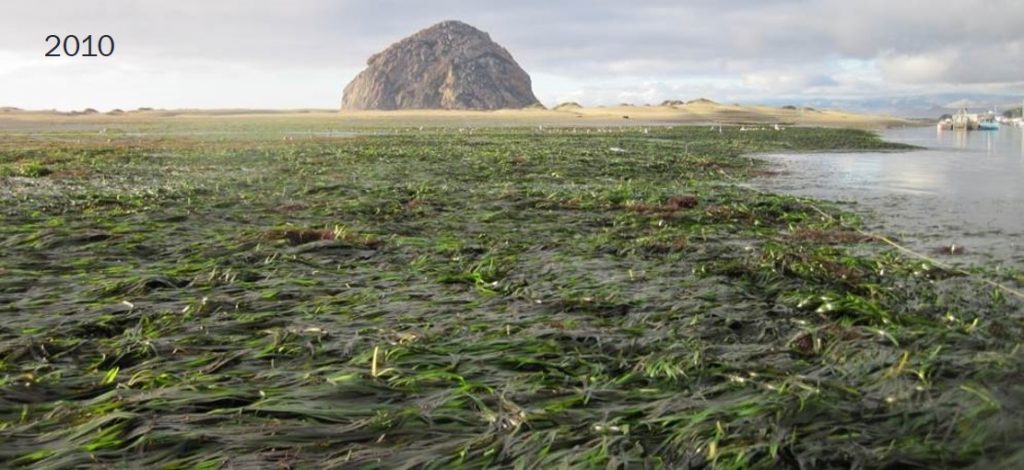
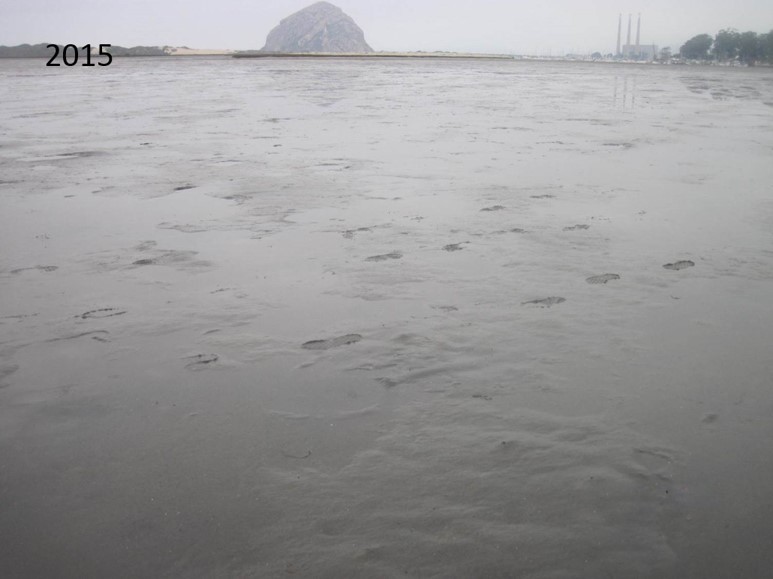
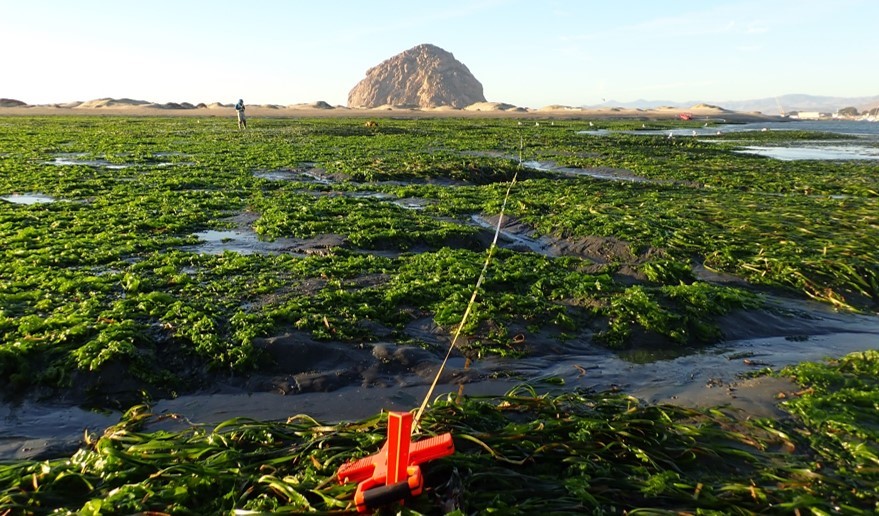
Where has eelgrass habitat grown back?
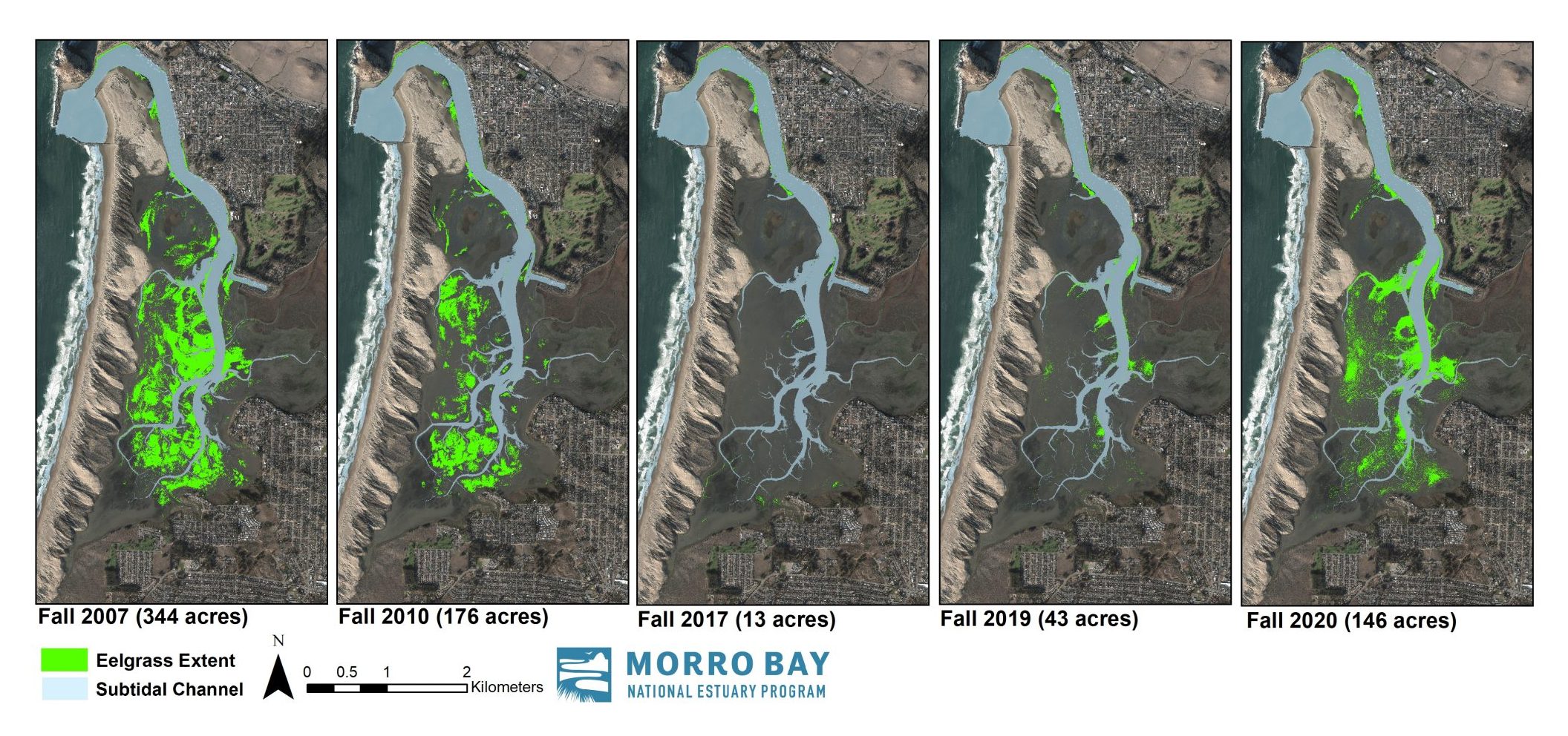
During the recent decline, eelgrass towards the bay mouth remained relatively stable. Most of the eelgrass lost was in the mid and back bay. In 2016 and 2017, we observed small patches of individual eelgrass plants returning to these areas, but much of the estuary remained mudflat where eelgrass had previously grown. Areas adjacent to the main tidal channel) have filled in the fastest, with smaller patches expanding into sizable continuous eelgrass beds. Currently, eelgrass is present almost continuously from Morro Bay State Park Marina to Pasadena Point along the main tidal channel.
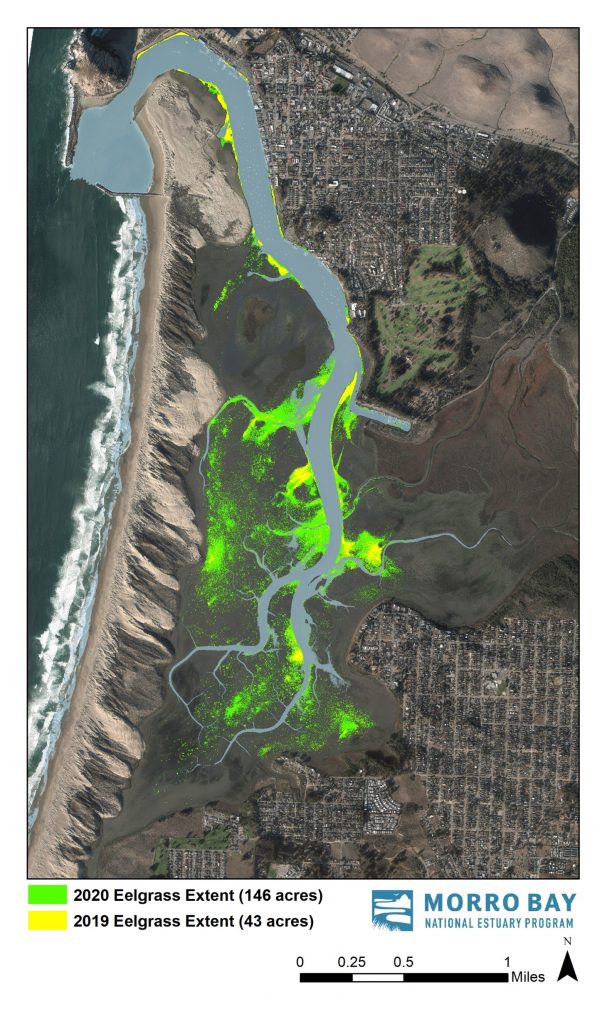
To learn more about how the eelgrass coverage is calculated using high-resolution images of the bay, check out our Field Updates November 2021: Eelgrass Monitoring Behind the Scenes blog.
Eelgrass expands naturally and with human assistance
Eelgrass can expand naturally through a horizontal root system referred to as rhizomes. It can also release seeds that spread with the tides. To aid the natural expansion of eelgrass, the Estuary Program has worked with project partners and funding support over the last five years to harvest eelgrass from healthy donor beds and transplant it in areas where eelgrass had died back. These partners and funders include private individuals, United States Fish and Wildlife Service, Pacific Marine Estuarine Fish Habitat Partnership, United States Environmental Protection Agency, California Department of Fish and Wildlife, Black Brant Group, and others.
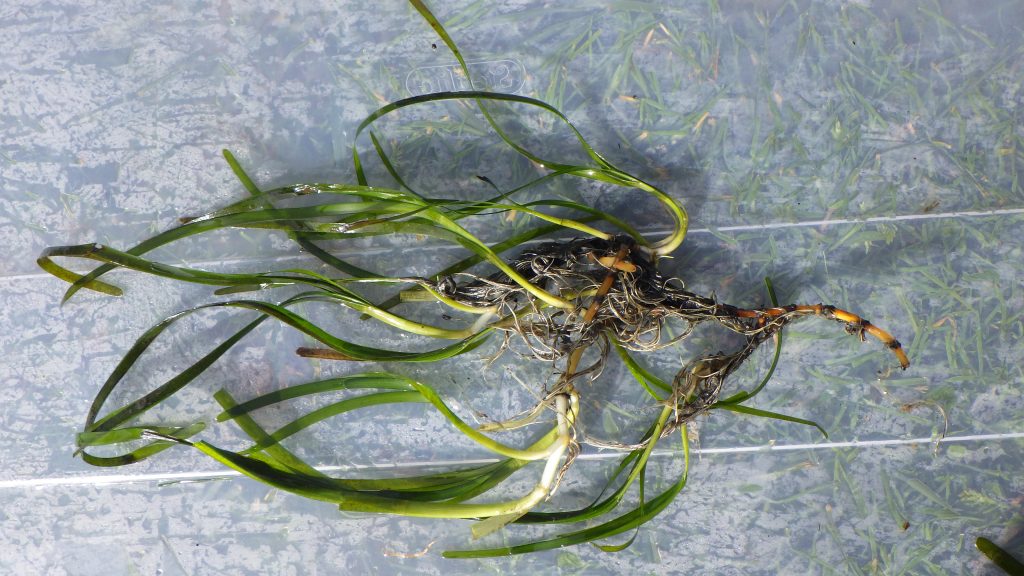
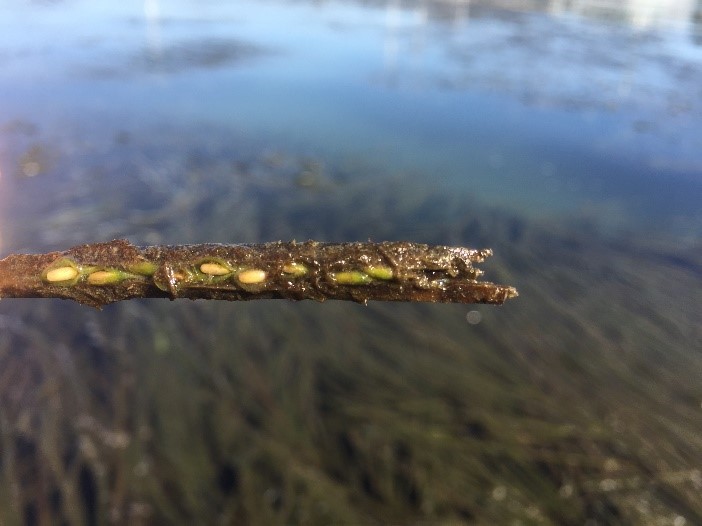
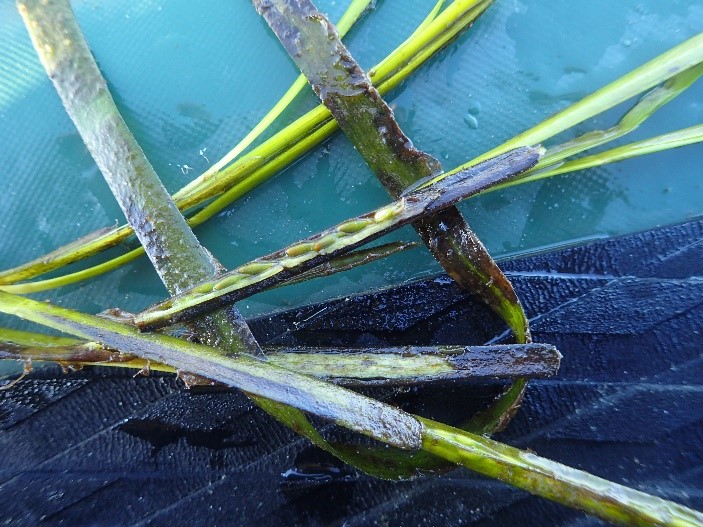
In 2018, we planted six eelgrass restoration plots in the area shown in the picture below. Those original six plantings expanded into two large beds (shown on the left and right of the foreground) over the following two years. In left bed, we originally planted three rebar pieces with about 25 eelgrass rhizomes tied to each one. In the bed on the right, we planted three one-meter-squared plots. You can see one of the original plots marked by a square transect inside the oval.
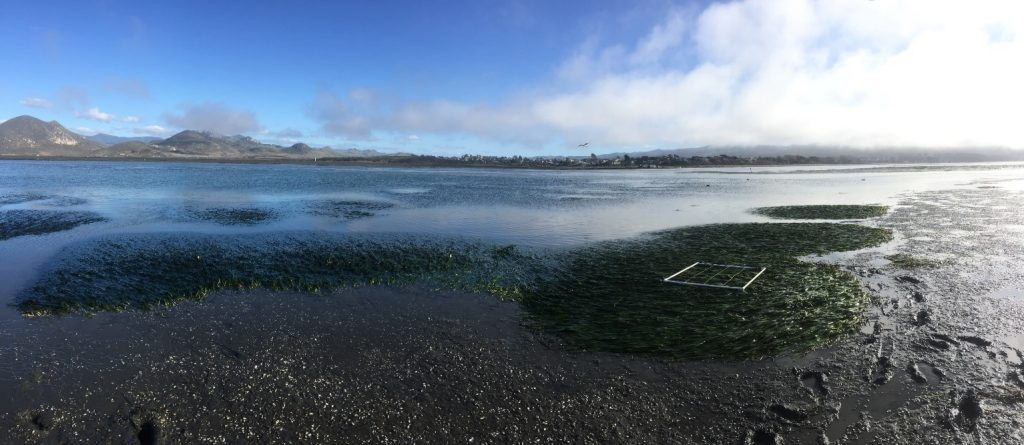
You can find further information on eelgrass restoration efforts in prior blogs here and you can read about the factors that affect eelgrass health here. We will continue to report on eelgrass health and restoration efforts in the future.
What’s next?
At the most recent peak of eelgrass coverage in 2007, there were 344 acres of eelgrass habitat in Morro Bay. This historic acreage gives us an idea of how much eelgrass the bay is able to support. Considering this number and the recent mapping of suitable elevations for eelgrass habitat, we have set 313 acres as our bay-wide eelgrass goal.
We plan to continue restoration efforts this spring. We will also continue mapping eelgrass acreage. The Estuary Program partnered with Cal Poly researchers in early December 2021 to collect high-resolution images of the bay to track eelgrass acreage changes since 2020. We now begin the lengthy work of field checks and computer analysis to create the 2021 eelgrass habitat map and assess how things have changed over the year. We will share an updated map and acreage amount next year.
These valuable efforts to monitor, map, restore, and conduct research on eelgrass would not have been possible without the support of numerous Estuary Program partners, including Tenera Environmental, Inc., Cal Poly, and Cuesta College.
Help us protect and restore the Morro Bay estuary!
- Support us by purchasing estuary-themed gear from ESTERO. This locally owned and operated company always donates 20% of proceeds from its Estuary clothing line and 100% of Estuary decal proceeds to the Estuary Program. Now through December 3, 2020, they’re increasing that donation to 50%! Thank you, ESTERO! Find their gear at ESTEROsurf.com and at Joe’s Surfboard Shop in Morro Bay.
- Donate to the Estuary Program today and support our work in the field, the lab, and beyond.
The Estuary Program is a 501(c)3 nonprofit. We depend on funding from grants and generous donors to continue our work. - Purchase items from the the Estuary Program’s store on Zazzle. Zazzle prints and ships your items, and the Estuary Program receives 10% of the proceeds. Choose from mugs, hats, t-shirts, and even fanny packs (they’re back!) with our fun Estuary Octopus design or our Mutts for the Bay logo.